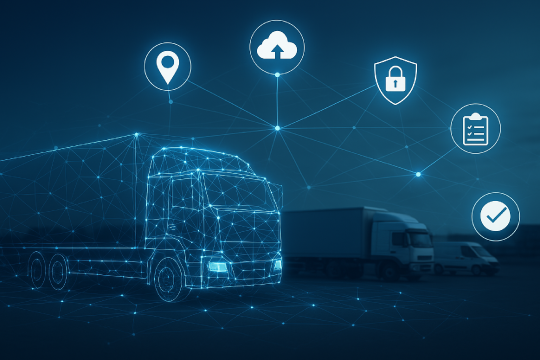How fleets can fight inflation in 2022
Inflation rose 7% in 2021, the highest gain since 1982. 97% of small businesses are worried about how this trend will impact their profits in 2022.
Inflation hits fleets especially hard. Chassis are more expensive and harder to find. New and used vehicles are more costly than ever. Driver pay is higher than it has been in decades and continues to rise.
The good news is that, in a growing economy, fleets that find innovative ways to economize can still manage to squeeze out record profits. Even in the third quarter of 2021, when inflation was nearing its peak, almost all freight sectors improved their yields by double digits.
Want to fight inflation and increase profits? Here are five ways to manage 2022’s inflation pain points:
1. Automate driver safety coaching
According to CNBC, the average employee will receive a pay hike of 5% in 2022. This will probably be even higher for truck drivers, whose weekly earnings have been increasing 4 to 5 times faster than the historical average.
Because of this, many fleets are starting to think about hiring younger, less experienced drivers. But these drivers need more intensive training and supervision than higher-paid industry vets.
What’s the solution? Fleets can onboard AI that monitors drivers and automatically coaches them via voice assistant. Whenever these AIs recognize signs of dangerous driving such as speeding and hard acceleration, they speak up and tell drivers to improve their behavior.
This helps fleets reduce accidents by monitoring newer, less experienced drivers with an eye that never sleeps – advanced driver safety technology.
2. Increase engine life
Automotive categories account for 40% of today’s elevated inflation. Both new and used vehicles are scarce and costly. Even individual vehicle components are becoming harder to find and more expensive to buy.
In this environment, vehicle failure isn’t an option. When engines stop working, mechanics might not be able to find the parts they need to get them back on the road. When trucks get scrapped, managers might not be able to find affordable replacement vehicles.
Fleets can solve this problem by onboarding all-in-one maintenance software. These solutions keep vehicles working longer by putting all mechanic information on a shared online platform, automating customized part replacement alerts, and monitoring engine health in real time. It’s the multi-pronged approach that this era of inflation demands.
3. Decrease theft
As vehicles and assets become more expensive, the cost of theft becomes more devastating. For example, if a chassis or container is lost to theft, managers might not be able to find a replacement. When stolen items can’t be replaced, a single theft can potentially debilitate a fleet.
While many fleet management software providers offer bare bones anti-theft tools, very few offer the comprehensive security solution that is needed when the cost of theft becomes so high. A complete anti-theft suite needs to have a number of different features: Automatic alerts when assets leave geofences. Real-time theft monitoring. Break-in alerts for containers, trailers, and reefers. Simple, durable installation.
The only fleet management software provider who offers all of these features is FleetUp. Don’t let thieves take what you can’t replace – fight back with automation.
4. Decrease insurance costs
When costs rise, insurance payouts rise. When insurance payouts rise, the cost of buying insurance rises. In 2022, insurance rates are expected to rise by 10%.
Insurance is already a huge cost for fleets. An extra 10% bump will only make reaching revenue goals harder. Some fleets have clawed their insurance spending back by contacting their provider and asking for discounts for dashcams.
Insurance companies are willing to provide these discounts because dashcams make fleets safer, which means they’re less likely to have to pay out for accidents. AI dashcams are even better – they’re automatically trained to recognize and respond to reckless driving in real time.
5. Decrease fuel spending
Fuel already accounts for 60% of the average fleet’s operating costs. And in 2022, it might account for even more. According to Goldman Sachs, gas is likely to top $100 a barrel by the year’s third quarter.
As these costs climb, it will be increasingly important to save every possible drop of fuel. That’s why it adopting cutting-edge fuel management tools can be a game-changer. If fleet managers aren’t in the cab with their drivers, it’s difficult to know how drivers might be wasting fuel. And even the most experienced veterans often have one or two fuel-wasting habits. Fuel management software solves these problems by automatically identifying the primary ways that entire fleets are misusing fuel and helping managers teach individual drivers how to avoid fuel-draining behaviors.
Fight inflation with FleetUp.
|






